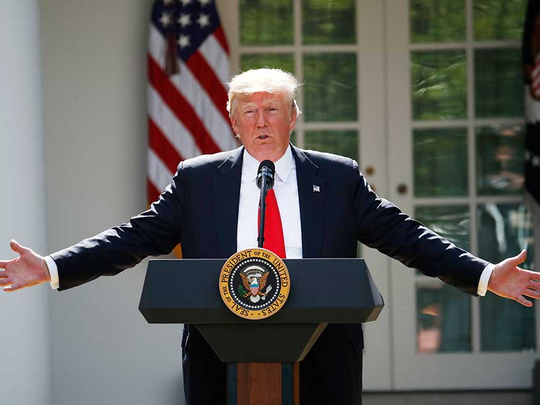
Washington: Donald Trump’s threat to impose tariffs on another $200 billion of Chinese imports could cut as much as half a percentage point from the nation’s economic growth, according to economists.
The warning comes amid signs that the world’s second biggest economy — and biggest contributor to global growth — is already slowing down as a simmering trade dispute with the US risks spiralling into a protracted trade war. China’s economy grew by 6.9 per cent in 2017 and the government has set a growth target of 6.5 per cent for the current year.
Trump on Monday evening ordered identification of $200 billion in Chinese imports for additional tariffs of 10 per cent — with another $200 billion after that if Beijing retaliates. He’s already promised to place tariffs of 25 per cent on $50 billion, starting July 6 with an initial $34 billion worth of imports.
The Damage:
Analysis of how the tariffs impact vary and much depends on the final details of the duties that are pushed through. It’s also the case that China’s authorities have massive monetary and fiscal power they can unleash to counter any trade-related slowdown.
Officials are already pulling multiple policy levers in an attempt to steady financial markets rattled by the intensification of the trade dispute with the US and a worsening growth outlook.
Officials set the daily fixing of the yuan at a much stronger level than expected on Wednesday, suggesting efforts to stem a two-day slump that was the steepest since the 2015 devaluation. Late Tuesday, People’s Bank of China Governor Yi Gang pledged to use monetary policy tools “comprehensively” in support of the economy.
Adding to already deep tensions, the Trump administration released a scathing report late Tuesday in Washington that accused China of pursuing policies that threaten US economic and national security. It said that China’s spectacular economic growth “has been achieved in significant part through aggressive acts, policies and practices that fall outside of global norms and rules.”
The rising prospect of an all out trade war complicates policymakers’ efforts to curb debt in the world’s second-largest economy, especially with signs that economic growth is already slowing down. May data for industrial output, retail sales and investment all came in beneath economist forecasts.
Estimates of economic damage may not take full account of the PBOC’s massive monetary firepower. A simple route to shore up liquidity and economic confidence is a cut to the reserve requirement ratio, a step which China has plenty of room to do and has taken already twice this year.
Still, economists and business executives say there’s still some prospect that a full-blown trade war can be avoided. Goldman Sachs Group Inc Chief Executive Officer Lloyd Blankfein said Trump’s threats are more of a bargaining strategy than all-out catastrophe.
“That’s what you’d do if it was a negotiating position and you wanted to remind your negotiating counter party of how much firepower you have,” Blankfein said Tuesday in an interview with Bloomberg. “I don’t think we’re in a suicide pact on this, so I suspect we’re not going to cause the economies to collapse.”










